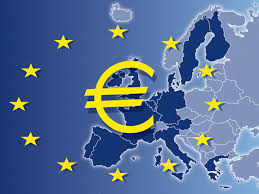Week in Review
The Eurozone posted data last Friday disclosing that its annual inflation had slumped to 0.3% during November from its prior release of 0.4% dragged downwards by a significant decline in oil prices. Although this result matched analysts’ expectations, it still registered its lowest value in almost 5 years. This new decline will definitely upset the European Central Bank (ECB) which has targeted an annual inflation value of 2%. However, this key parameter lasted registered that number at the beginning of 2013 and has been constantly in descent ever since.
As the ECB assesses that any figure under 1% is critical, it may now be forced to enter the fray by implementing new quantitative easing policies in order to restrict the adverse impacts of deflation. Economists rank deflation as a serious concern because falling prices can prompt consumers to limit their spending as they seek basement prices. As such, the European economy could degenerate into a deeper contraction if this menace spirals out-of-control.
However, a prominent member of the ECB board, Sabine Lautenschlaeger, quickly responded to this precarious situation by advising that economists should not expect imminent action by the central bank. She emphatically stated that a number of major hurdles exist that need to be correctly addressed before the ECB can instigate a new program of asset purchasing. This coming week will now be a crucial time because the ECB is scheduled to convene at its next policy meeting. In efforts to counter deflation, the ECB has already trimmed its benchmark interest rate to nearly zero as well as preparing itself for the introduction of aggressive monetary easing policies structured on the purchasing of government bonds.
What to Expect This Week
A sequence of major economic data will be posted as this week progresses.
The Eurozone will commence proceedings by publishing its important PMI Manufacturing Index. Analysts will be keen to discover if this region can stem growing concerns about a pending recession by printing an improvement over the previous 48.5 result. Later in the session, the USA will present its ISM index which is expected to register growth. The Reserve Bank of Australia will finish the day by announcing its latest policy decisions. No change in interest rates is predicted.
Great Britain will launch Tuesday by declaring its PMI Construction figure. Can the UK continue to shrug off the worrisome developments across the channel by recording a better number than the previous 61.4? Australia will subsequently proclaim its Gross Domestic Product for the third quarter of 2014 which should continue to hover about 0.5%. Finally, Japan will issue its PMI Composite survey with a 49.5 value the favored outcome.
On Wednesday, the Eurozone will post a number of PMI Composites which could verify that the region has already entered a new recession. Afterwards, the Bank of Canada will advise whether it will alter its benchmark interest rate. No chances are forecasted this time around. Australia will complete the session by issuing its Retail Sales for October. Expert consensus currently supports a 1.2% result.
A number of primary releases and announcements are due for presentation on Thursday. For example, the Bank of England could become the first major central bank to hike its interest rates. The European Central Bank will then post its latest monetary easing policies. Will the ECB instigate any new measures to combat deflation? Next, the US Department of Labor will publish its weekly report disclosing how many Americans filed first claims for unemployment benefits last week. Will the latest worrisome uptrend be extended?
Friday will provide the pivotal events of the week when the USA presents its eagerly awaited Non-Farm Payroll (NFP) figure and Unemployment Rate. US employers are expected to have created 214,000 new jobs during November. If the actual result misses this target then serious doubts will be cast on the true health of the US economic recovery. Canada will terminate the week by disclosing its own labor report which should confirm that nearly 45,000 posts were generated last month.




